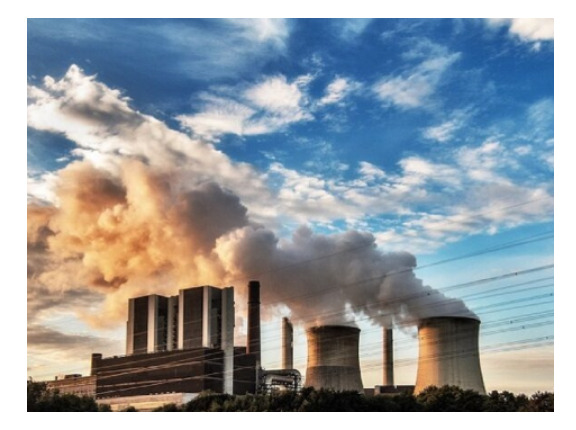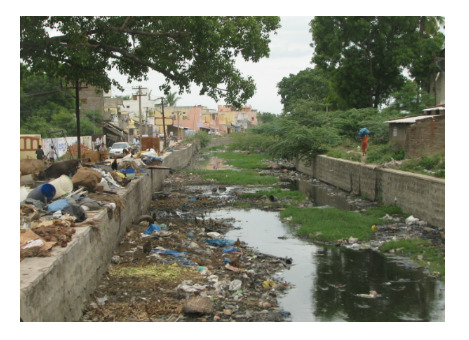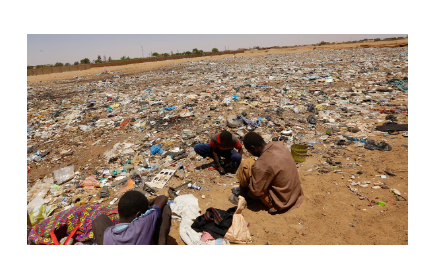Table of Contents
Introduction
Pollution refers to the introduction of harmful substances or contaminants into the natural environment, causing adverse effects on living organisms, ecosystems, and the overall balance of the ecosystem. These pollutants can be in the form of gases, liquids, or solid particles and can originate from natural sources or human activities.
Pollution can occur in various environmental media, including air, water, and soil. It can also encompass other aspects such as noise pollution (excessive or disturbing noise) and light pollution (excessive or misdirected artificial light). The severity of pollution and its impact depend on the type and concentration of pollutants, the duration of exposure, and the sensitivity of the affected organisms or ecosystems.
Types of Pollution
As previously said, there are various sorts of pollution, which can be brought on by either man-made or natural activity (such as cars, factories, and nuclear waste). The following categories of pollution are added to these:
- Air Pollution
- Water Pollution
- Soil Pollution
- Noise Pollution
Other types of pollution, such as light pollution, thermal pollution, and radioactive pollution, occur in addition to these four. The latter is the deadliest yet considerably rarer than other varieties.
Air Pollution
Air pollution refers to the presence of harmful substances and pollutants in the air that can negatively impact human health, the environment, and the Earth’s atmosphere. It occurs when pollutants are released into the air in excessive quantities, leading to a decline in air quality.
Causes of Air Pollution:

- Industrial Emissions: Industrial activities, such as manufacturing, power generation, and chemical processing, release pollutants into the air. These emissions include sulfur dioxide (SO2), nitrogen oxides (NOx), particulate matter, and various volatile organic compounds (VOCs).
- Vehicle Emissions: Exhaust from vehicles, including cars, trucks, and motorcycles, is a major source of air pollution. It releases pollutants such as carbon monoxide (CO), nitrogen dioxide (NO2), and particulate matter.
- Power Generation: The burning of fossil fuels like coal, oil, and natural gas for electricity generation produces significant amounts of air pollutants, including sulfur dioxide, nitrogen oxides, and greenhouse gases like carbon dioxide (CO2).
- Residential and Commercial Heating: The burning of wood, coal, oil, and other fuels for heating in residential and commercial settings can contribute to air pollution, releasing pollutants such as particulate matter, carbon monoxide, and volatile organic compounds.
- Agricultural Activities: Agricultural practices such as livestock farming and crop burning can release pollutants like ammonia (NH3), methane (CH4), and agricultural chemicals into the air.
- Waste Management: Improper waste management practices, such as open burning of waste and the release of methane from landfills, can contribute to air pollution.
Effects of Air Pollution:
- Respiratory Issues: Air pollution can cause or worsen respiratory problems, including asthma, bronchitis, and other respiratory infections. It can also lead to the development of chronic respiratory diseases over time.
- Cardiovascular Problems: Exposure to air pollutants is associated with an increased risk of cardiovascular diseases, including heart attacks, strokes, and high blood pressure.
- Reduced Lung Function: Prolonged exposure to air pollution can reduce lung function and impair lung development, particularly in children.
- Environmental Impacts: Air pollution can harm plants, crops, and ecosystems. It can lead to acid rain, which damages forests, lakes, and soil, and contributes to the decline of biodiversity.
- Climate Change: Certain air pollutants, such as carbon dioxide and other greenhouse gases, contribute to global warming and climate change, altering weather patterns and causing long-term environmental shifts.
- Economic Costs: Air pollution has significant economic impacts, including healthcare costs associated with treating pollution-related illnesses, decreased productivity due to sick days, and damage to infrastructure and agriculture.
Addressing air pollution requires a combination of strategies, including stricter emission standards, promoting clean and renewable energy sources, improving public transportation, implementing effective waste management practices, and raising awareness about the importance of air quality and individual actions to reduce pollution.
Water Pollution
Water pollution refers to the contamination of water bodies, including lakes, rivers, oceans, groundwater, and even drinking water sources, with harmful substances or pollutants. It occurs when pollutants are introduced into water in excessive quantities, leading to a decline in water quality and potentially harming aquatic ecosystems and human health.
Causes of Water Pollution:

- Industrial Discharge: Industries can release pollutants such as heavy metals, chemicals, solvents, and toxic substances into water bodies through improper waste disposal or inadequate treatment of wastewater.
- Municipal Sewage and Wastewater: Inadequate treatment or improper disposal of sewage and wastewater from cities and towns can lead to the contamination of water bodies with pathogens, nutrients (nitrogen and phosphorus), and pollutants.
- Agricultural Runoff: Excessive use of fertilizers, pesticides, and herbicides in agriculture can result in the runoff of these chemicals into nearby water bodies. This runoff can contribute to nutrient pollution and harmful algal blooms, causing water quality degradation.
- Oil Spills: Accidental spills or leaks from oil tankers, pipelines, and offshore drilling can contaminate water bodies, leading to severe ecological damage and harm to marine life.
- Improper Waste Disposal: Improper disposal of solid waste, including plastics, hazardous materials, and other debris, can find their way into water bodies, causing pollution and endangering aquatic organisms.
- Mining Activities: Mining operations can release heavy metals, sediments, and chemicals into water bodies, contaminating the water and affecting aquatic ecosystems.
- Atmospheric Deposition: Airborne pollutants, such as acid rain or industrial emissions, can be deposited into water bodies through rainfall or atmospheric deposition, leading to water pollution.
Effects of Water Pollution:
- Harm to Aquatic Life: Water pollution can harm aquatic organisms, including fish, amphibians, invertebrates, and plants, through direct toxicity, habitat destruction, and oxygen depletion.
- Algal Blooms: Nutrient pollution from agricultural runoff or wastewater discharge can lead to excessive algal growth, causing harmful algal blooms. These blooms deplete oxygen levels in the water, leading to the death of fish and other aquatic species.
- Contaminated Drinking Water: Water pollution can affect drinking water sources, making them unsafe for human consumption. Contaminants such as bacteria, viruses, chemicals, and heavy metals can pose significant health risks if ingested.
- Ecosystem Imbalance: Water pollution can disrupt aquatic ecosystems, leading to the decline or loss of certain species, loss of biodiversity, and imbalance in ecological processes.
- Human Health Impacts: Consuming or coming into contact with polluted water can cause various waterborne diseases, including diarrhea, cholera, and skin infections. Prolonged exposure to certain pollutants in water can also lead to chronic health issues.
- Economic Consequences: Water pollution has economic implications, including the costs of treating polluted water, the loss of fisheries and tourism revenue, and the need for restoration efforts.
Addressing water pollution requires implementing and enforcing regulations on industrial and municipal waste discharge, improving wastewater treatment systems, promoting sustainable agricultural practices, raising public awareness, and investing in clean water infrastructure and conservation measures.
Soil Pollution
Soil pollution, also known as land pollution, refers to the contamination of the soil with harmful substances or pollutants. It occurs when pollutants are introduced into the soil in excessive quantities, leading to degradation of soil quality and posing risks to the environment, ecosystems, and human health.
Causes of Soil Pollution:

- Industrial Activities: Improper disposal of industrial waste and effluents can contaminate the soil with heavy metals, chemicals, solvents, and toxic substances. Industrial spills and leaks can also contribute to soil pollution.
- Agricultural Practices: The excessive use of chemical fertilizers, pesticides, and herbicides in agriculture can lead to the buildup of pollutants in the soil. Improper handling and disposal of agricultural chemicals can also contribute to soil pollution.
- Improper Waste Disposal: Improper disposal of solid waste, including household waste, construction debris, and industrial waste, can result in the release of pollutants into the soil.
- Mining Activities: Mining operations can release heavy metals, toxic chemicals, and other contaminants into the soil. The excavation and extraction process can disrupt the soil structure, leading to soil degradation.
- Contamination from Landfills: Improperly managed landfills can contaminate the surrounding soil through the seepage of leachate, which contains pollutants from decomposing waste.
- Accidental Spills: Accidental spills of chemicals, fuels, or hazardous substances, such as oil spills, can contaminate the soil and have long-lasting effects on soil quality.
Effects of Soil Pollution:
- Reduced Soil Fertility: Soil pollution can reduce soil fertility by altering the physical, chemical, and biological properties of the soil. This can inhibit plant growth and affect agricultural productivity.
- Contaminated Food Supply: Pollutants present in the soil can be absorbed by plants, leading to contaminated crops. Consuming these contaminated crops can pose risks to human health.
- Water Contamination: Soil pollution can contribute to water pollution by allowing contaminants to leach into groundwater and nearby surface water bodies, affecting drinking water sources and aquatic ecosystems.
- Ecological Imbalance: Soil pollution can disrupt soil ecosystems, leading to the loss of beneficial soil organisms, reduced biodiversity, and imbalances in nutrient cycling and ecological processes.
- Health Risks: Exposure to polluted soil, through direct contact or inhalation of dust particles, can pose health risks to humans, including skin irritations, respiratory problems, and the potential for long-term health effects from the absorption of toxic substances.
- Economic Impact: Soil pollution can have economic consequences, including reduced agricultural productivity, increased healthcare costs due to pollution-related illnesses, and the need for soil remediation and restoration efforts.
Addressing soil pollution requires implementing proper waste management practices, promoting sustainable agriculture, reducing the use of chemical inputs, adopting organic farming methods, implementing soil conservation measures, and remediating contaminated sites through soil remediation techniques.
Noise Pollution
Noise pollution refers to the excessive or disturbing noise that disrupts the normal balance of sounds in the environment, causing adverse effects on human health, well-being, and the quality of life. It occurs when the intensity or duration of sound exceeds tolerable levels, leading to discomfort, annoyance, or harm.
Causes of Noise Pollution:
- Transportation: Road traffic, including cars, buses, motorcycles, and trucks, is a significant source of noise pollution. Airplanes, trains, and construction vehicles also contribute to noise pollution.
- Industrial Activities: Industrial machinery, factories, construction sites, and power plants generate high levels of noise, especially in areas with inadequate noise control measures.
- Urbanization: Urban areas with high population density often experience noise pollution due to constant human activities, such as street traffic, construction, commercial establishments, and nightlife.
- Recreational Activities: Recreational activities like concerts, stadiums, nightclubs, and loud music can produce excessive noise, particularly when they occur in residential areas or during nighttime hours.
- Household Noise: Household activities, such as home appliances, power tools, and playing loud music or television, can contribute to noise pollution, especially in close living quarters.
- Infrastructure: Noise pollution can be caused by infrastructure projects like highways, airports, and railways, particularly if they are situated near residential areas.
Effects of Noise Pollution:
- Health Problems: Prolonged exposure to high noise levels can lead to a range of health issues, including hearing loss, tinnitus (ringing in the ears), stress, anxiety, sleep disturbances, cardiovascular problems, and impaired cognitive function.
- Sleep Disturbances: Noise pollution can disrupt sleep patterns, leading to insomnia, fatigue, and reduced overall quality of sleep. Lack of proper sleep can have adverse effects on physical and mental health.
- Communication Interference: Excessive noise can hinder effective communication, causing difficulties in conversations, learning environments, and work settings. It can also impact concentration and productivity.
- Psychological Impact: Continuous exposure to noise pollution can result in irritability, frustration, decreased concentration, and negative impacts on mental well-being.
- Environmental Consequences: Noise pollution can disrupt natural ecosystems, affecting wildlife behavior, migration patterns, and communication among animals. It can lead to habitat degradation and imbalances in ecological processes.
- Social Disruption: Noise pollution can lead to social conflicts, as it can create disturbances, affect neighborly relations, and decrease the overall quality of life in communities.
Addressing noise pollution involves implementing noise control measures, enforcing regulations on noise levels, designing noise-reducing infrastructure, promoting public awareness and education about noise management, and adopting quieter technologies and practices in various sectors.
Light Pollution
Light pollution is the excessive or misdirected artificial light that disrupts the natural darkness of the night sky. It primarily arises from street lights, advertising signs, illuminated buildings, and excessive outdoor lighting.
Thermal Pollution
Thermal pollution occurs when there is a significant change in the temperature of water bodies due to the discharge of heated water from industrial processes, power plants, and nuclear reactors. The elevated temperature can adversely impact aquatic ecosystems and marine life.
Radioactive Pollution
Radioactive pollution involves the presence of radioactive substances in the environment, typically resulting from nuclear power plants, nuclear weapons testing, improper disposal of radioactive waste, and accidents at nuclear facilities. Radioactive pollution poses significant risks to human health and the environment due to the harmful ionizing radiation emitted by these substances.
Plastic Pollution
Plastic pollution refers to the accumulation of plastic waste in the environment, particularly in oceans, rivers, and land. It arises from improper disposal and inefficient recycling of plastic products, leading to severe environmental degradation and harm to marine life.
Conclusion
The sources of pollution can be both natural and anthropogenic (caused by human activities). Natural sources include volcanic eruptions, forest fires, and dust storms, while anthropogenic sources involve activities such as industrial processes, transportation, agriculture, mining, and improper waste disposal. Human-related pollution is typically of greater concern due to its widespread and often concentrated nature.
Pollution has significant implications for human health, leading to respiratory problems, cardiovascular diseases, allergies, and even cancer. It can also harm ecosystems, leading to the decline of plant and animal species, disruption of food chains, and degradation of habitats. Additionally, pollution can have far-reaching consequences for climate change, ozone depletion, and global environmental sustainability.
Efforts to combat pollution involve the implementation of regulations and policies, technological innovations, and individual actions to reduce pollution emissions, improve waste management practices, promote renewable energy sources, and adopt sustainable lifestyles. The goal is to minimize pollution levels and restore and maintain the health and integrity of the environment for current and future generations.
Related Articles
| Botany | Zoology | ||
| Rabi and Kharif Crops | Rainwater Harvesting | Ecology | Homeostasis |
| Plants | Flora and Fauna | Food Adulteration | Environment |
| Water Cycle | Types of soil | Difference Between Cold-Blooded and Warm-Blooded Animals | Renewable & Non-Renewable Resources |
| Soil | Carbon Cycle | Heart | Human Body Anatomy |
| Vegetative Propagation | How do Organisms Reproduce | Soil Erosion | Diseases |
| Fragmentation | Asexual Reproduction | Digestive System | Digestive System |
| budding | Binary Fission | Vermicomposting | Types of Pollution |
| Amoeba | Heterotrophic Nutrition | Tissue | Metabolism |
| Root System | Plant Kingdom | Natural disasters | Omnivores |
| Fertilizers | Irrigation | Wildlife Sanctuary | Biotic and Abiotic |
| Nutrtion in Amoeba | Manures and Fertilizers | Air Pollution | Ozone Layer Depletion |
| Manure | Oxygen Cycle | Adaptation | Types of Teeth |
FAQs on Types Of Pollution
How do we prevent pollution?
Pollution can be prevented through various measures, including implementing strict environmental regulations and standards, promoting and adopting clean and renewable energy sources, encouraging sustainable transportation options and reducing vehicle emissions, improving waste management practices, including recycling and proper disposal of hazardous materials, using environmentally friendly agricultural practices that minimize chemical use and promote soil and water conservation, and educating the public about the importance of pollution prevention and individual actions to reduce pollution.
What are 4 types of pollution?
The four types of pollution are air pollution, water pollution, soil pollution, and noise pollution.
What is pollution short essay?
Pollution refers to the contamination of the environment with harmful substances or pollutants, resulting in adverse effects on living organisms, ecosystems, and the overall well-being of the planet. It can take various forms, such as air pollution, water pollution, soil pollution, and noise pollution. Pollution is primarily caused by human activities, including industrial processes, transportation, improper waste disposal, and excessive use of chemicals. The consequences of pollution include health problems, ecological damage, climate change, and economic costs. Preventing pollution requires adopting sustainable practices, implementing regulations, promoting awareness, and embracing cleaner technologies.
What are the 5 main types of pollution?
The five main types of pollution are air pollution, water pollution, soil pollution, noise pollution, and light pollution.
What are the 10 causes of air pollution?
The causes of air pollution can vary, but here are 10 common contributors: emissions from industrial activities and power plants, vehicle exhaust and emissions, burning of fossil fuels for energy production, agricultural activities such as livestock farming and crop burning, residential heating and cooking with solid fuels, improper waste management and open burning of waste, mining and construction activities, volatile organic compounds (VOCs) from solvents and paints, aerosol sprays and chemical products, and natural sources like dust, wildfires, and volcanic eruptions.
What are the 5 effects of pollution?
The effects of pollution can have significant impacts on the environment and human health. Here are five common effects: degradation of ecosystems and biodiversity loss, adverse health effects such as respiratory problems, cardiovascular diseases, and cancer, contamination of water sources and reduction in water quality, soil degradation and reduction in agricultural productivity, and climate change and disruption of weather patterns.
What are 5 causes of noise pollution?
Five common causes of noise pollution include transportation, including road traffic, airplanes, and trains, industrial activities and machinery, construction sites and urban development, recreational activities like concerts, stadiums, and nightclubs, and household activities such as loud music, appliances, and power tools.









